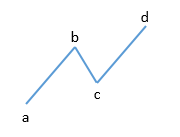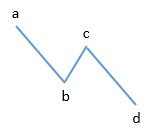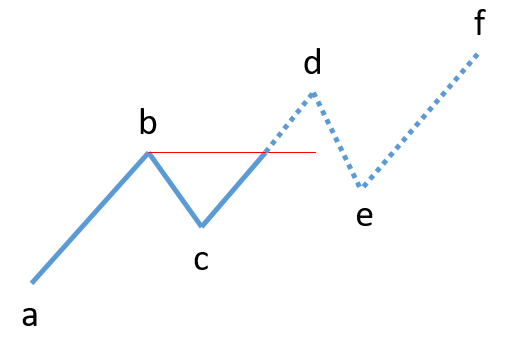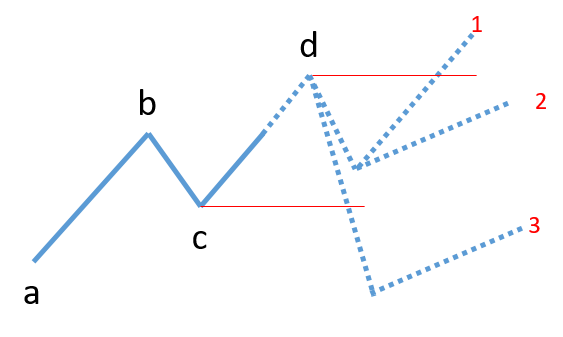Trend continuation
So far we’ve laid some foundations by showing:
- what I mean by uptrends and downtrends
- how I make my choice of turning points objective using AdaptiveZigZag
… now let’s return to the purpose of this blog, which is testing this assumption:
that they tend to continue, after we’re detected them, for long enough for us to exploit them.
The next step is to define what we mean by a trend continuing.
One helpful consequence of the definition of trend that I’m using is that, although trends come in all shapes and sizes, they all boil down to these simple underlying patterns:


I’ll use these diagrams a lot. They are not to scale but capture the important points e.g. in an uptrend, c is higher than a and d is higher than b. I won’t clutter the discussion by describing both uptrends and downtrends I’ll pick one pattern and assume that the “mirror image” statements apply to the opposite pattern.
In the following diagram, imagine price has just broken above b for the first time. So we have an uptrend with c as its controlling low. We don’t yet know where the next turning point (d) is, but we know it will be higher than b ( i.e. it will be a higher high).

For that trend to continue the following must happen:
i) the market pulls back (by at least the Retracement Threshold). Now we know where point d is.
… and then
ii) rallies higher than d without going lower than c.
Point e, the new controlling low, is simply the lowest point between points d and f.
The importance of using an objective Retracement Threshold is that we’re not tempted to count a small pullback from d, followed by a small rally, as a trend continuation.
This may sound like a small point but it avoids a real dilemma for novices (at least) and for programs.
What else could have happened from the same starting point? Let’s add the obvious alternative scenarios:

1) is what we just discussed, trend continuation.
2) price neither moves above d nor below c
3) the trend ends because the current controlling low (c) is broken